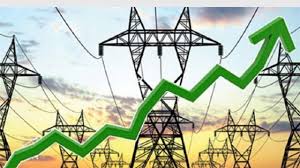In its first year, the PTI government added Rs.464 billion in the circular debt, Rs538 billion were added in 2nd year and now after adjusting subsidies and increase in tariffs circular debt edged up by Rs.130 billion in the third year.

The ministry submitted the final circular debt report for fiscal year 2020-21 that ended in June before the Cabinet Committee on Energy (CCoE), which met on Friday.
The report showed that the power sector’s circular debt remained at Rs.2.280 trillion, which is slightly less than the earlier provisional estimates of over Rs.2.3 trillion.
When the Pakistan Tehreek-e-Insaf (PTI) came to power, the circular debt was Rs.1.148 trillion that has doubled within three years, reports daily Tribune.
In its first year, the PTI added Rs.464 billion in the circular debt and in the second year another Rs.538 billion were added and now after adjusting subsidies and increase in tariffs the net addition was Rs.130 billion in the third year. The Rs130 billion figure was not telling the complete picture.
The ruling PTI had promised to bring the circular debt to zero by December 2020 but the numbers showed that there was an increase in both the flow and stock of the circular debt compared with June 2018.
The circular debt piled up due to a gap between the cost of electricity generation, transmission, and distribution and actual money collected on account of bills including increase in tariffs and payment of subsidies.

The government added Rs404 billion to the flow of circular debt in the last fiscal year due to less provision of subsidies against commitments, increased cost of inefficiencies, interest on debt parked in a holding company and less recovery of bills, documents of the energy ministry showed.
However, the government report showed that the net increase in the circular debt was Rs130 billion in fiscal year 2020-21 after adjusting increase in electricity prices and reduction in the stock of the debt.
The government has been making efforts to improve efficiency but the power sector situation remains grim despite putting an additional burden of over Rs150 billion on consumers in the past one year by increasing electricity prices, the summary showed.

The government paid Rs90 billion to independent power producers (IPPs) and another Rs77 billion reduction was shown on account of retirement of Power Holding Limited debt.
There was Rs207 billion or 20% increase in the flow of the circular debt, as the payables to the power producers jumped from Rs1.04 trillion to Rs1.3 trillion, according to the report. But the stock has been reduced by 7.6% to Rs930 billion –a reduction of Rs77 billion.
In fiscal year 2020-21, the government provided Rs72 billion less in subsidies as against the requirements that then became part of the circular debt, according to the summary. There was an increase of Rs57 billion on account of unpaid subsidies and another Rs15 billion due to unbudgeted subsidies. The government did not pay Rs27 billion AJK subsidies and another Rs6 billion of the K-Electric consumer subsidies despite making commitments.
The government added another Rs75 billion in the circular debt on account of interest payments to the IPPs on delayed payments, which were 36% higher than the preceding year, according to the summary.
Similarly, another amount of Rs30 billion was added on account of interest paid on the Power Holding Limited loans, which were 57% less than the previous year. This is despite the fact the consumers are also paying debt servicing surcharge through their monthly bills.
There was an improvement of 81% under one head – and it is passing on the generation cost to the end consumers. As against the preceding year’s Rs270 billion, in the just ended fiscal year Rs51 billion was added under this head, which suggest significant price increase.
Share this:
- Click to share on Twitter (Opens in new window)
- Click to share on Facebook (Opens in new window)
- Click to share on Reddit (Opens in new window)
- Click to share on LinkedIn (Opens in new window)
- Click to email a link to a friend (Opens in new window)
- Click to print (Opens in new window)
- Click to share on Pinterest (Opens in new window)
- Click to share on Tumblr (Opens in new window)

